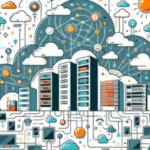We’ve all experienced the wonders of remote work. The ability to work in your pajamas while still meeting work obligations is undoubtedly alluring.
However, remote work also introduces cybersecurity risks that require mitigation. As employees access confidential data from home networks, they open vulnerabilities that cybercriminals can exploit.
Fortunately, with proper safety measures in place, remote work can be just as secure as working in the office.
The Risks of Cyber Threats When Working Remotely
Working from your couch with laptop in hand may sound ideal, but this cozy scenario invites cyber-risk.
As distributed work becomes more prevalent, cyberattacks have surged over 20% by some estimates. Information security professionals report more frequent and severe threats than ever before.
No industry is immune; a single click by an employee or contractor can trigger financial and reputational catastrophe.
Why does remote work increase cyber-risk?
Corporate networks feature safeguards like firewalls to create controlled, secured environments. By contrast, home networks lack equivalent defenses.
Employees using personal devices are logging in outside this perimeter, granting cybercriminals access to sensitive corporate data and infrastructure. Without proper precautions, confidential information is far more exposed.
How to Keep Remote Work Safe from Cyber Threats
Eliminating remote work altogether mitigates this risk but stifles flexibility and innovation.
The optimal solution implements secure access to enable distributed teams while protecting the organization.
Core tenets of this approach include:
- Virtual Private Networks (VPNs): VPNs establish encrypted tunnels between devices and corporate resources. Traffic within these channels remains shielded from external parties.
- MFA: Adding an additional authentication factor enhances account security. Users must provide not just a password but an additional credential tied specifically to them.
- Endpoint Security: Antivirus, anti-malware and firewall endpoint protections safeguard devices themselves. By hardening this fundamental layer, threats have fewer exposures to penetrate.
With modern identity and access management, the benefits of remote work need not come at the cost of security.
Workers can collaborate from anywhere without granting cybercriminals access into the heart of the business.





